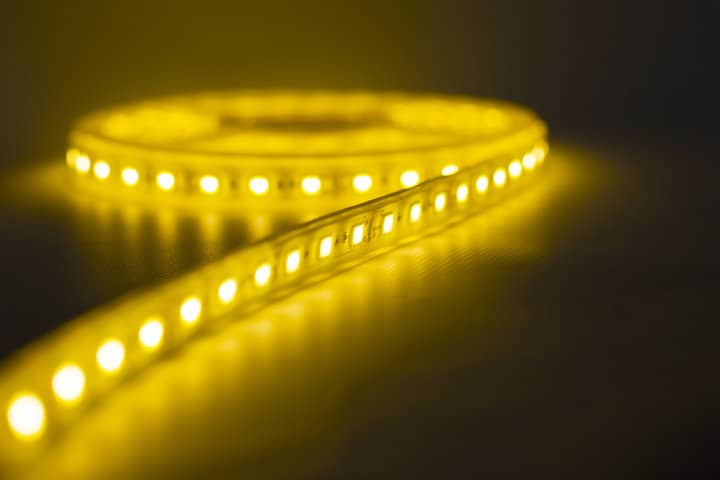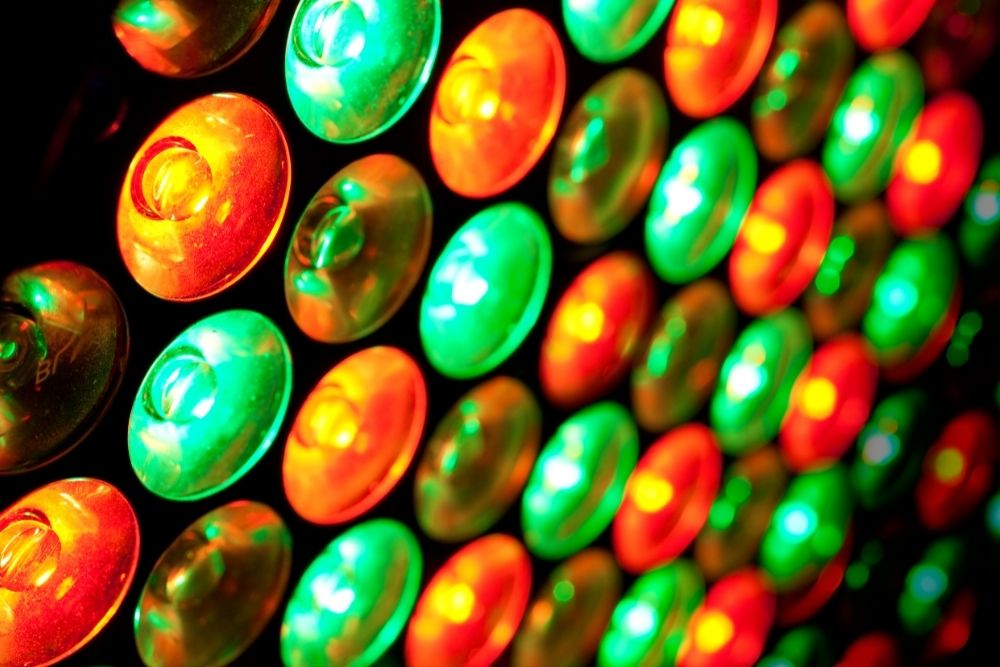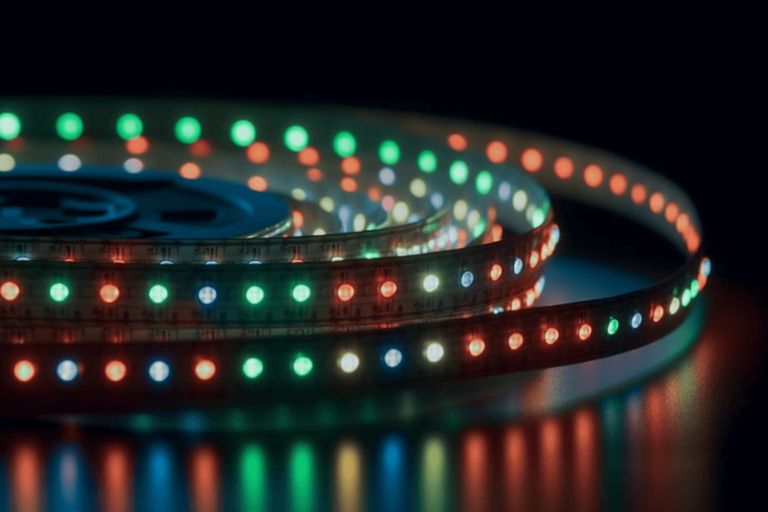If you have three LED lights displaying different colors, several factors could be contributing to this issue. Variations in LED quality and consistency, as well as aging LEDs, can cause differences in color output. Voltage fluctuations and the use of incompatible dimmer switches may also lead to color inconsistencies. It’s important to check the compatibility of your dimmer switches. And make sure your LEDs are from the same manufacturer and batch to reduce variations.
Additionally, matching the color temperatures of your LEDs and considering the influence of your room’s environment on perceived color can help address the problem. If issues persist, consulting with an expert may be necessary to identify specific concerns in your setup.
What are the common causes of LED light color variations?

These common causes in greater detail can aid in troubleshooting and resolving issues related to variations in LED light colors.
LED Quality and Variability
LED manufacturers produce LEDs with variations in color temperature, even within specified color ranges. This variation is due to the manufacturing process and the materials used.
When LEDs from different batches or manufacturers are used in close proximity, they may emit slightly different colors. This discrepancy can be noticeable, particularly in applications where uniform lighting is critical, such as in architectural or display lighting.
To mitigate this, you can select LEDs from the same manufacturer and batch or choose manufacturers known for producing consistent LED products.
Aging LEDs
Over time, LEDs can experience a shift in color, primarily in lower-quality or older LED models. This phenomenon is often referred to as “color drift” or “color shift.”
The aging process can be influenced by factors like operating temperature, drive current, and the quality of the LED components. As LEDs age, their color temperature can change, leading to variations among LEDs in the same installation.
Replacing aged LEDs or selecting LED models known for color stability can help maintain consistent lighting.
Voltage Fluctuations
Variations in the voltage supplied to LED lights can lead to variations in color. LED lights are sensitive to voltage changes, and fluctuations can affect their light output.
Voltage fluctuations might occur due to electrical issues in your home or variations in the power supply from your utility company. These fluctuations can be temporary or chronic.
Using voltage stabilizers or surge protectors can help mitigate the impact of voltage fluctuations on LED colors.
Incompatibility with Dimmer Switches
Incompatibility between LED lights and dimmer switches can lead to color inconsistencies. Not all LED lights work well with all dimmer switches, especially older dimmer models designed for incandescent lights.
When LEDs are used with incompatible dimmers, they may flicker, produce uneven light output, or exhibit different colors at different dimmer settings.
To resolve this, ensure that your dimmer switches are compatible with the specific LED models you are using. Look for dimmable LED products or consider replacing dimmer switches if necessary.
Variation in Color Temperatures
LED lights are available in various color temperatures, ranging from warm white (2700K) to cool white (5000K) to daylight (6500K). The choice of color temperature affects the perceived color of the light.
However, if you have LED lights with different specified color temperatures in the same space, they will naturally produce different colors of light.
To achieve consistent lighting, make sure all the LED lights in a particular area have the same specified color temperature.
Impact of Environmental Factors
The environment in which LEDs are installed can influence the perceived color of the light. Light interacts with surrounding surfaces, such as wall colors, furnishings, and decor, which can affect the way you perceive the LED light’s color.
For example, a warm white LED light may appear slightly different when reflected off a blue wall compared to when it’s reflected off a white wall.
Furthermore, it’s important to consider the room’s color scheme and environmental factors when evaluating perceived color differences in LED lights. Adjusting the room’s color scheme or using diffusers can help minimize these effects.
What are the solutions for LED light color variation?
Color variation in LED lights can be a common issue, but there are several solutions to address it. LED light color variation can be caused by factors such as manufacturing variances, temperature, or power supply issues.
Ensuring Consistency in LED Selection
To minimize color variations, it’s essential to select LED lights that are consistent in terms of color temperature and quality. This means choosing LEDs from the same manufacturer and ideally from the same production batch.
Consistency can be achieved by purchasing all the LED lights you need at once or verifying that the manufacturer provides LEDs with tight color tolerance specifications.
Selecting LEDs that are certified under industry standards, such as ENERGY STAR, can also ensure better color consistency.
Checking Voltage Stability
Fluctuations in the voltage supplied to LED lights can result in variations in light output and color. To address this, it’s important to check the electrical supply for stability.
In addition, use a digital multimeter to measure the voltage at the LED fixtures during different times of the day and under different load conditions.
If voltage instability is identified, consult an electrician to address the issue, which may involve stabilizers, dedicated circuits, or addressing power quality problems.
Using Compatible Dimmer Switches
If you’re using dimmer switches with your LED lights, it’s crucial to ensure compatibility. Incompatibility can lead to flickering, color variations, and other issues.
Start by checking the manufacturer’s recommendations for compatible dimmers. Some LEDs may require specific dimmer models or may work better with newer, LED-compatible dimmers.
Testing different dimmer switches with your LEDs to find one that provides consistent and flicker-free dimming is also a practical approach.
Matching Color Temperatures

Color temperature is a key factor in LED lighting. Ensure that all the LED lights in a given space have the same specified color temperature.
If you’re uncertain about the color temperature of your existing LEDs, you can use a color temperature meter or consult the product documentation.
When adding new LEDs to an installation, make sure they match the existing color temperature to achieve uniform lighting.
Evaluating Environmental Factors
Environmental factors can influence the perception of LED light colors. When evaluating color discrepancies, consider how the lighting interacts with the surrounding environment.
The color of walls, furnishings, and decor can impact how you perceive the light. For example, warm white light may appear warmer when reflected off warm-toned walls.
Adjusting the room’s color scheme, using diffusers, or adding light shields can help minimize the influence of environmental factors on LED light color.
Replacing Aged LEDs if Necessary
If aging LEDs are causing color variations, consider replacing them. Aged LEDs may have shifted in color due to prolonged use and wear.
When replacing LEDs, select high-quality, long-lasting models known for color stability.
Regular maintenance and timely replacement can help maintain consistent lighting over time.
FAQ’s
Why are red LEDs bad at night?
Red LEDs are less disruptive to night vision because they have a longer wavelength and are less likely to interfere with your ability to see in the dark.
Why are my LED lights red green and blue?
LED lights use a combination of red, green, and blue diodes to create a wide range of colors through additive color mixing. Different intensities of these primary colors can create various shades and hues.
Is red LED light safe for eyes?
Red LED light is generally considered safe for the eyes, and it’s often used in night vision applications. However, staring at any bright light source for an extended period can cause discomfort or potential harm.
Is red LED light good for skin?
Red LED light therapy can stimulate collagen production and promote skin rejuvenation. It’s used in cosmetic treatments and may have benefits for skin health.
Is red LED light harmful?
Red LED light is not harmful in normal, controlled applications. However, like any light source, excessive exposure or misuse can lead to discomfort or issues. Always follow recommended guidelines.
Which light color is best for sleeping?
Warm white or soft, warm colors are generally considered best for sleeping, as they promote relaxation and don’t interfere with the body’s production of melatonin, a hormone that helps regulate sleep.
Final Words
When your LED lights display different colors, it can be due to a variety of factors. These can include variations in LED quality, aging LEDs, voltage fluctuations, incompatible dimmer switches, differences in color temperatures, and the impact of your room’s environment.
In addition, to address these issues, you should strive for consistency in your LED selection, check for voltage stability, use compatible dimmer switches, ensure matching color temperatures, consider the surroundings, and replace aged LEDs if needed. By understanding and implementing these solutions, you can enjoy consistent and pleasant lighting in your space.

